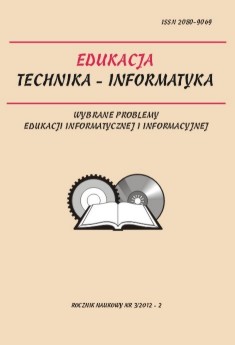Reakcja źrenicy jako wskaźnik przetwarzania informacji podczas rozwiązywania zadań testowych z zakresu nauk ścisłych
Pupillary response as an indicator of the processing load while solving multiply choice science tasks
Author(s): Mirosława Sajka, Roman ROSIEKSubject(s): Education
Published by: Wydawnictwo Oświatowe FOSZE
Keywords: eye-tracking, pupil dilation, didactics of science, problem solving.
Summary/Abstract: In this paper we present results of the research on monitoring and analysis of the pupil dilation changes in the groups of high school students, university students and experts while solving a multiple choice science tasks. The aim of the research is verification if there are differences between physiological responses in the distinguished groups, connected with the subjective estimation of the tasks’ difficulty and the level of motivation to solve them. We assume that the analysis of the relative changes of pupil dilation can be an valuable indicator of the level of motivation. The process of solving tasks by people having insufficient experience or lower level of knowledge is connected with greater processing load and mental effort. It also can be observed by engaging greater psychophysiological resources, and particularly by higher values of the relative pupil dilation changes. We claim that for individuals, who were motivated enough to solve a problem, the pupillary response is negatively correlated with the cognitive ability.
Journal: Edukacja - Technika - Informatyka
- Issue Year: V/2014
- Issue No: 2
- Page Range: 368-374
- Page Count: 7
- Language: Polish

